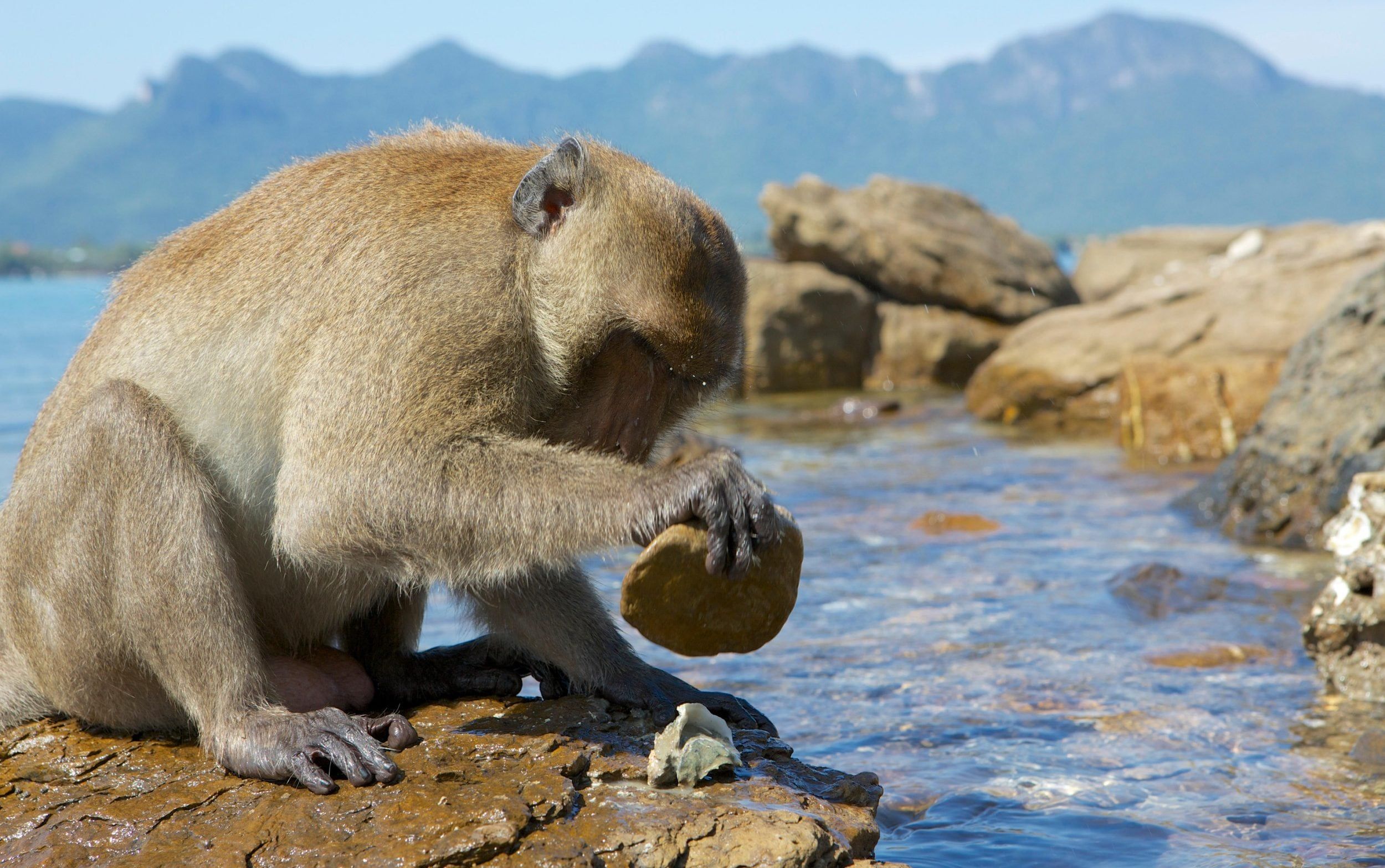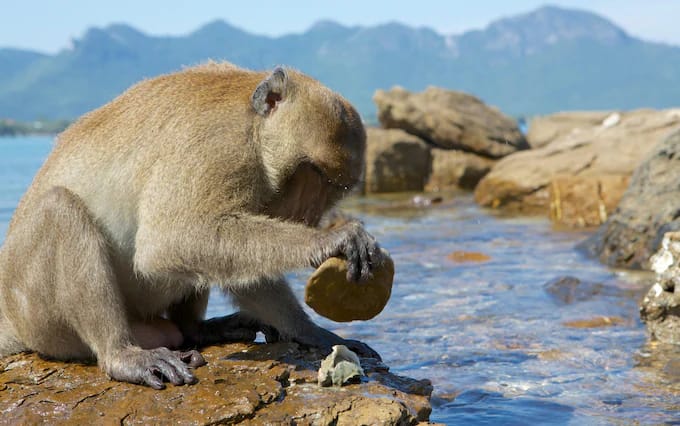
‘Life finds a way,’ is a popular refrain used to highlight the marvellous ways in which nature demonstrates its complexity and marvels when confronted with an obstruction. For millions of years, adaptation has been critical to survival. And now and again, the persistent effort of living organisms to fight their way through the struggle of life produces amusing events. In this scenario, monkeys in a Thai tourist destination learned to utilize stone tools after the COVID-19 pandemic in 2020 imposed significant limitations on global tourism.
The tourism business was severely impacted, and the monkeys on Koh Ped were deprived of food provided by tourists
In this case, the monkeys are common long-tailed macaques (Macaca fascicularis fascicularis). They have a sizable population on Koh Ped, an island near Pattaya, Thailand. The island is a popular tourist destination, with tourists arriving by boat. Tourists used to give mangoes, cucumbers, and almonds to monkeys out of fascination or to show their love for the animals. Then there was the epidemic. The tourism business was severely impacted, and the monkeys on Koh Ped were deprived of food provided by tourists. This resulted in a beautiful development.
For decades, a research team led by Suchinda Malaivijitnond of Chulalongkorn University in Bangkok has been researching these monkeys. Before the pandemic, the scientists had never seen the monkeys use any form of instrument. The researchers were in for a surprise when they returned to the island last year. The monkeys, increasingly forced to rely on themselves for sustenance, have taken to opening sea shells using rocks as tools. Initially, the scientists witnessed only two monkeys using stones to open shells. When the team returned this year, they discovered that the behaviour had spread throughout the population.
“Several other groups of primates use stone tools, but we haven’t been able to study the origins of this behaviour before,” says Jonathan Reeves at the Max Planck Institute for Evolutionary Anthropology in Leipzig, Germany He was quoted by The New Scientist. “We…can observe it and we get to see it, but seldom do we get the chance to see it emerge as a new behaviour in a population.” The research team saw the monkeys placing the shell on the ground, finding a rock of sufficient size, lifting it to shoulder level, and dropping it on the shell. This may be considered a primitive strategy, yet it is representative of how our biological ancestors in the animal world adapt in the face of hardship. We all have this feature. In March of this year, the work was published in Science Advances.
